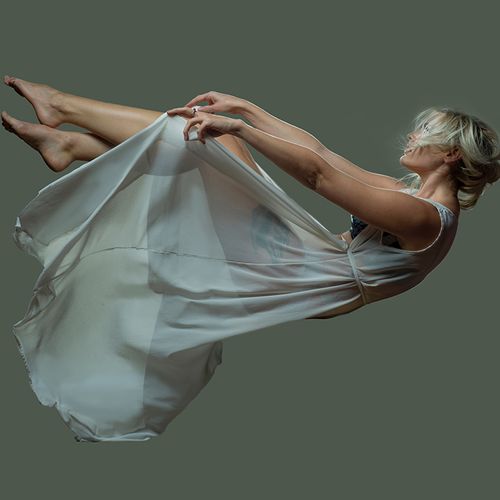Each year, about one in every three people over age 65 suffers a fall, a mishap that is far more dangerous than most people realize.
Important research: In a 20-year study of nearly 5,600 women ages 70 and older, breaking a hip doubled the risk for death in the following year. Men who suffer a broken hip after a fall are also at increased risk for an untimely death.
Most people know the standard recommendations to reduce their risk for falls-get medical attention for balance and vision problems...improve the lighting in and around their homes... and eliminate loose carpets, cords and other obstacles.
What often gets overlooked: Painful feet.. foot deformities such as bunions...weak foot and ankle muscles.. and improper footwear also can significantly increase one's risk for falls.
Recent scientific evidence: In a 2011 study in the British Medical Journal, a comprehensive program of foot care reduced falls by one-third among a group of older people with assorted foot problems.
Get A Firm Foundation
With age, the muscles that support our ankles and feet often become weak a common problem that contributes to foot pain and reduced activity levels. Structural abnormalities in the feet, such as bunions and hammertoes, undermine stability. And conditions that blunt sensations in the feet, such as nerve damage commonly caused by diabetes, may impair the ability of one's feet to react quickly and adjust to potentially hazardous conditions.
Basic Fall-Prevention Workout
Stretching and strengthening exercises can reduce foot pain—and lower your risk for falls. Basic exercises to perform daily…
To help increase your ankles' range of motion: Sit in a chair with one knee extended. Rotate your foot in a clockwise, then counterclockwise direction. Repeat 10 times with each foot, in each direction.
To strengthen your toe muscles: Place small stones or marbles on the floor in front of you. While seated, pick up the stones with your bare toes and place them in a box, one by one. Pick up 20 stones with each foot, then repeat.
To stretch your calf muscles: Stand about two feet from a wall, then lean into it with one leg slightly bent at the knee about three inches in front of the other. Then reverse the position of your feet and lean forward to stretch the muscles of the other calf. Hold the stretch for 20 seconds, three times for each leg.
The right shoes are essential for everyone, but especially those with problem feet.
Most women know to avoid high heels, which make it more difficult to maintain balance. But many people opt for flimsy slip-on footwear, such as flip-flops, which may be comfortable but often become loose or come off the foot altogether, creating a balance hazard. It's far better to wear shoes that fasten to your feet with laces, Velcro or buckled straps.
Surprising fact: Most people assume that thick, cushiony soles, such as those found on most sneakers, help prevent falls because they tend to provide good support for your feet. But thinner, harder soles, such as those on some walking shoes, are safer because thin-soled shoes allow your feet to feel the sensations that help you maintain balance. A trade-off between comfort and safety may be necessary-you may have to wear less cushiony shoes that optimize balance.
Also, be sure that your shoes are the right size. Your feet may slide around in shoes that are too loose, while tight footwear won't allow your toes to respond to variations in the ground to help maintain stability while walking.
Remember: Shoe size often changes with age, as feet swell and spread. So have your feet measured every time you buy shoes.
Slightly more falls occur indoors than outdoors, and the proportion increases with age. Therefore, even when you're at home, proper footwear is crucial.
Important recent finding: When researchers at Harvard's Institute for Aging Research followed a group of older adults for more than two years, they found that more than half of those who fell indoors were barefoot, in their stocking feet or wearing slippers. These injuries tended to be more serious than those of people who were wearing shoes when they fell.
Best to wear at home: Sturdy, thin-soled shoes that have more structural integrity than the average slipper.
Do You Need Orthotics?
Many adults over age 65 could benefit from wearing orthotics-inserts that fit inside the shoe—to help prevent falls by providing additional support.
Properly made orthotics may improve the way your feet move as you walk, distribute your weight more broadly to reduce pressure on sensitive spots and help convey sensory information to your feet, all of which may lessen the risk for falls.
If you have structural foot problems due to diabetes or rheumatoid arthritis, you may need customized orthotics from a podiatrist.
Typical cost: About $400. Insurance coverage varies. But over-the-counter versions (made with firm material, not just a soft cushion) may work as well if your feet are relatively normal and your foot pain is fairly mild, Good brands include Vasyli and Langer. Usually, you will be able to transfer orthotics between shoes.
Most people find that full-length orthotics are less likely to slip inside the shoe than the half-length variety. Full-length orthotics also may feel more comfortable, especially if you have corns or calluses under the toes or on the ball of your foot.
Getting Help
If you have foot problems, seek care from a podiatrist or other health professional and be sure to mention any concerns about falling, Also ask for exercises, in addition to the ones described here, to address your specific foot issues.
Conquer Your Fear of Falling
Did you know that fear of falling raises risk of falling? Recent research revealed that older people who overestimated their risk of falling were more likely to fall than those who perceived their risk accurately.
